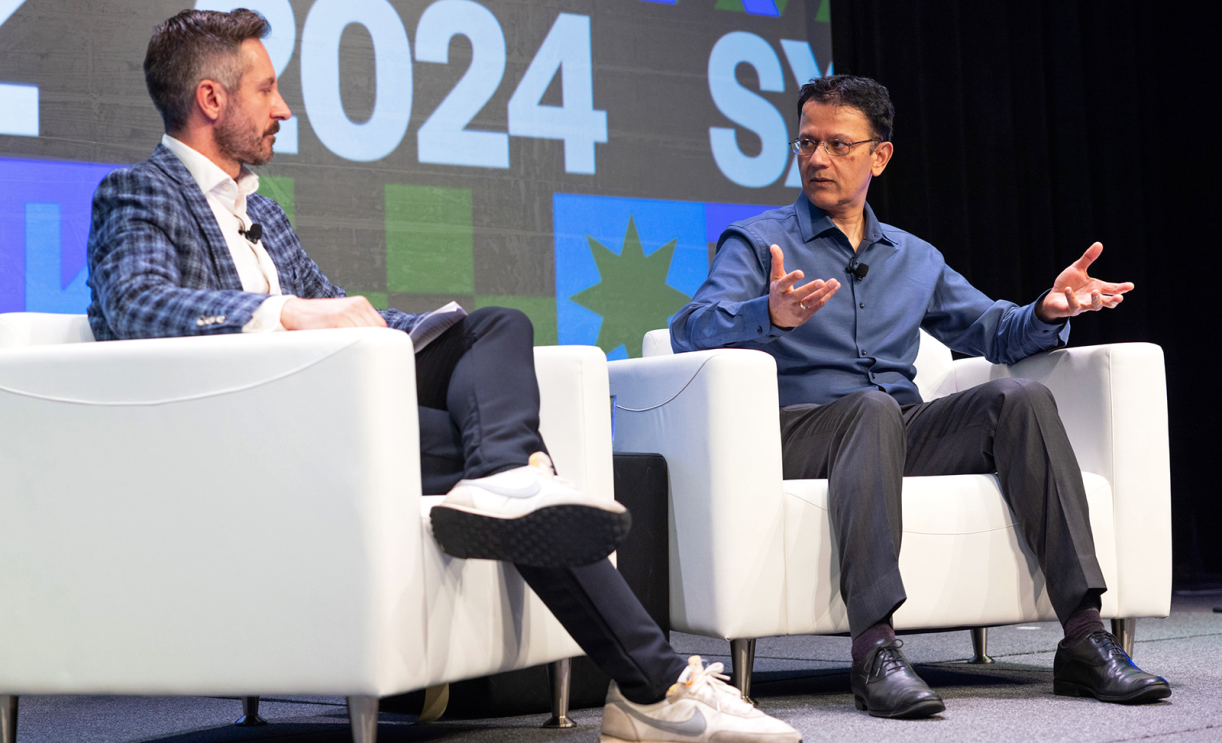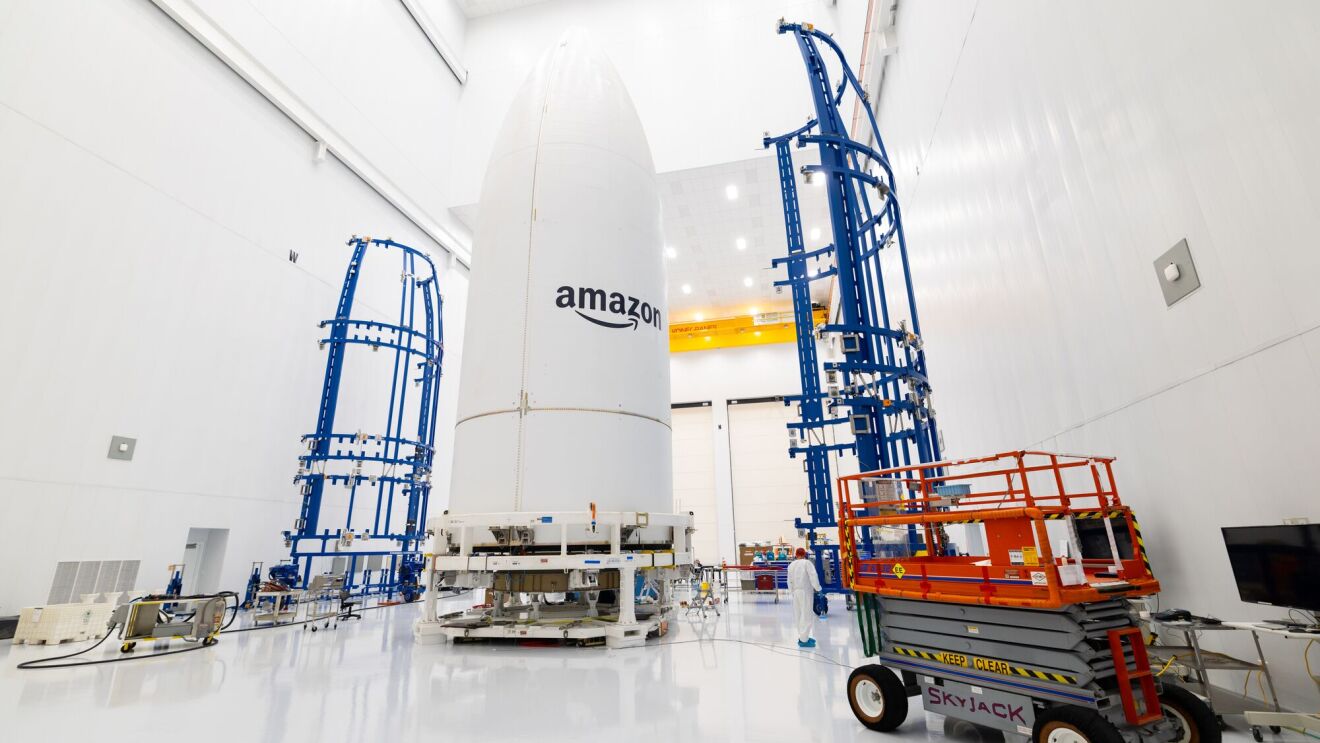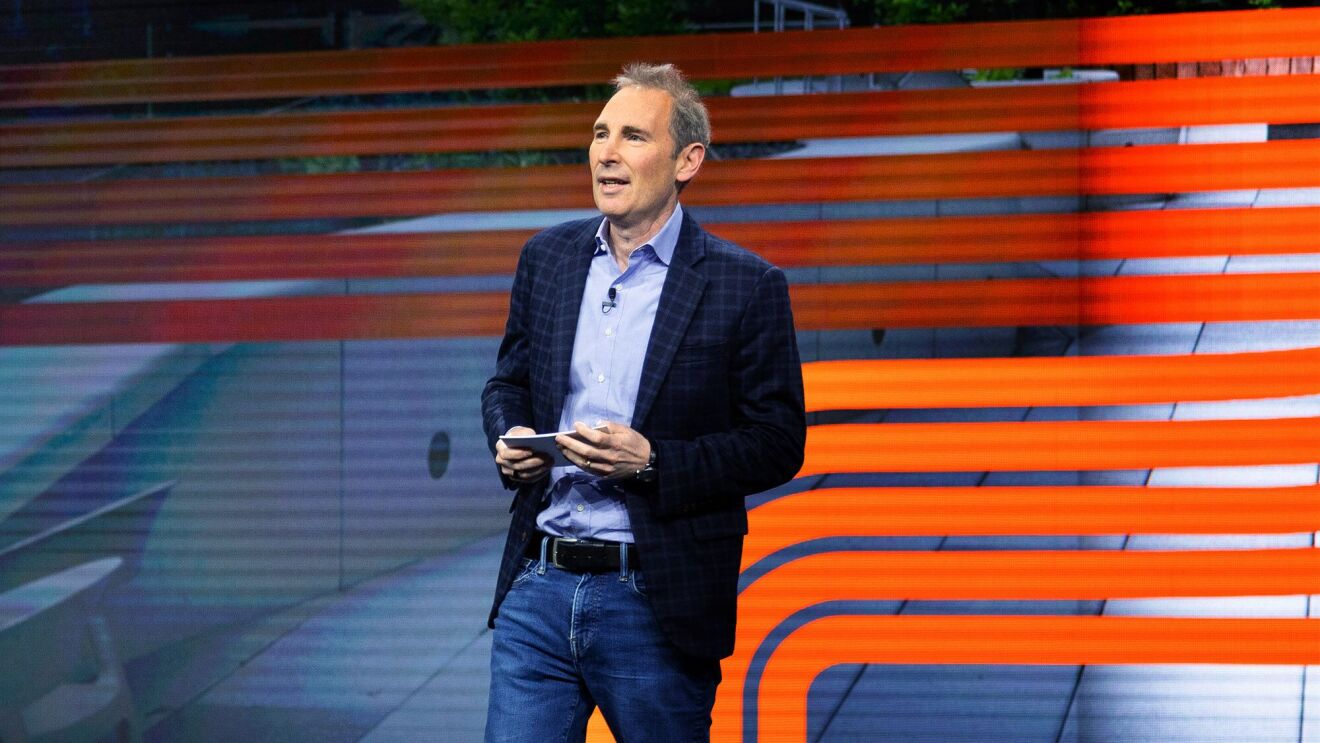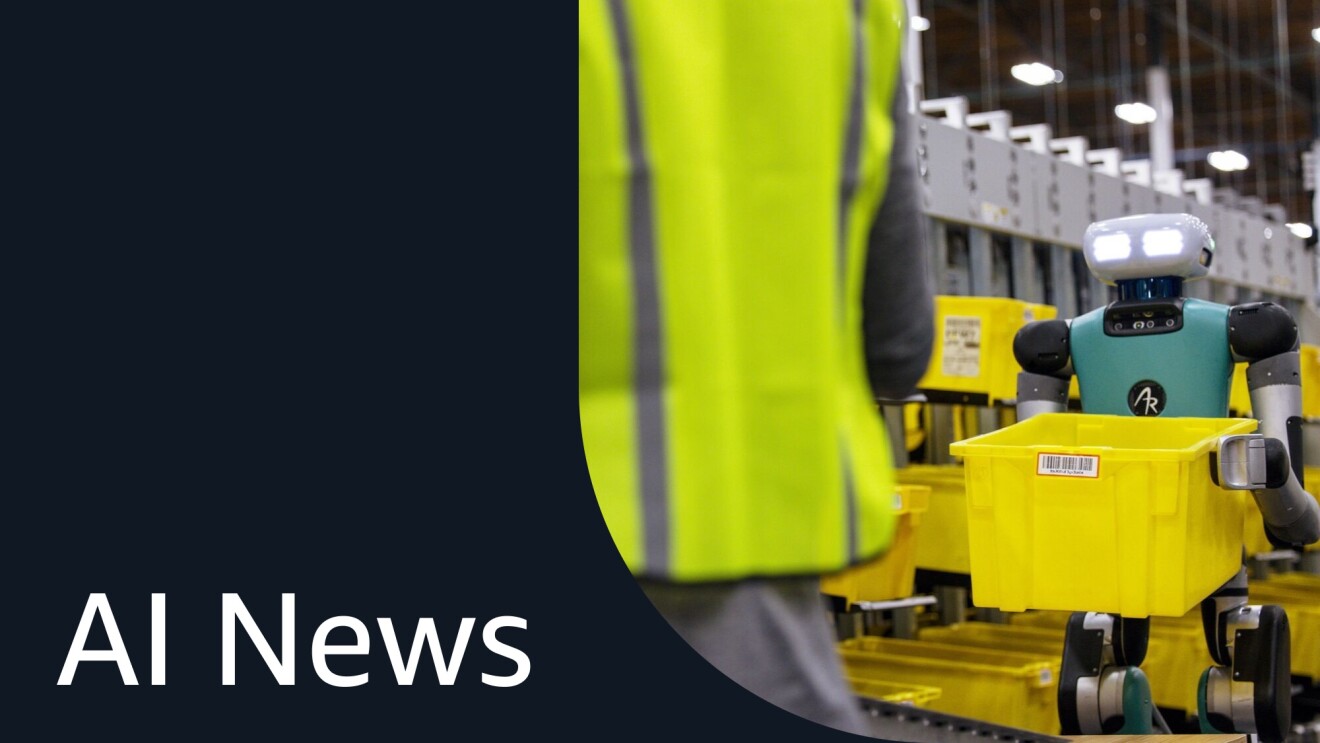 Ryan Heath, co-author, Axios AI+ (left) and Vishal Sharma, VP, AGI (right), at SXSW 2024 in Austin, Texas.Photo by Samantha Burkhardt, SXSW
Ryan Heath, co-author, Axios AI+ (left) and Vishal Sharma, VP, AGI (right), at SXSW 2024 in Austin, Texas.Photo by Samantha Burkhardt, SXSWPage overview
AI will enable invention everywhere
Generative AI’s impact on numerous industries has been as fast as it’s been remarkable, but the technology is still basically in its infancy, and it’s crucial to encourage creativity and exploration at this stage. We believe that giving companies and developers more model choices is the best way to encourage invention. That’s why we offer customers choice by providing the broadest selection of foundation models—both Amazon-built like the Titan models as well as those from other leading providers such as Anthropic, Mistral, Cohere, Meta, and Stability via Amazon Bedrock.
What’s also interesting is that large foundation models are making it easier to build dedicated models for different use cases faster. By eliminating the need to start from scratch, large models enable developers to create increasingly capable, smaller, and more purpose-built models. These models focus on narrower capabilities like customer service or document summarization that address specific business needs. With business owners automating more processes with generative AI, they can then turn their attention to new forms of invention and value creation for their customers.
I’m optimistic that humanity will benefit from AI across a spectrum of professional, personal, and academic environments. It can add machine-scale capabilities to the specialized skill sets of individuals, maximizing their impact on the world. It’s amazing to see how it has already enhanced productivity. For example, Amazon Q’s coding companion Amazon CodeWhisperer enables developers to work more productively by providing AI-powered code suggestions in real-time, across 15 programming languages. In some cases, developers were 27% more likely to complete tasks successfully and did so an average of 57% faster, helping them build whatever fuels their passion more easily.
Imagine a doctor providing care in an underserved region, her charts piling up as she sees patients back to back. What if a generative AI model could ingest her daily notes, then look up patient medical records and the region’s environmental history to not only offer a diagnosis but also a treatment plan? Or how about a struggling student, who can use AI to get a personalized curriculum, homework assignments, and feedback—all tailored to their specific learning style and educational background?
None of these examples replaces the human (e.g., the doctor or the teacher) in the equation. Instead, the technology enhances people’s existing resources, and makes more solutions accessible to them.
While many AI models feel “stuck” in our smart devices, it’s captivating to consider how new generations of AI models can expand beyond these devices to make an impact in the physical world as well.
Amazon’s own fulfillment centers offer up compelling evidence of this, where more than 750,000 robotic drive units are helping us deliver packages faster, more safely, and more efficiently. From our robotic arms like Sparrow and Cardinal, to our first autonomous mobile robot, Proteus, many of the robots found in our warehouses are capable of making some decisions without human intervention while simultaneously taking direction from centralized planning software, making the whole system highly intelligent.
But I can also foresee myriad ways in which AI will improve real-world tasks and processes in areas like retail, health care, agriculture, energy, and many others. As generative AI breaks free of our device screens and assimilates with robotics, the possibilities are endless.
In order for AI to realize its full potential, it is absolutely critical for it to be safe, secure, and trustworthy, and I am heartened to see the amount of coordination across the public and private sectors to make this a reality. At Amazon, we are committed to harnessing this technology responsibly, working hand in hand with our customers and governments to develop and use AI systems with safety, security, and fairness at the forefront. We support governments’ efforts to implement effective risk-based regulatory frameworks and guardrails while also allowing for continued innovation and practical application of the technology.
In fact, we recently announced our participation in the U.S. Artificial Intelligence Safety Institute Consortium, a group established by the National Institute of Standards and Technology (NIST) to advance safe and secure AI through government and industry collaboration. Through this program, we hope to establish new measurements and methodologies that will promote the development of trustworthy AI and its responsible use. It’s one of many steps we are taking to invest in the future of AI and help inform international standards that will benefit our customers and the communities where we live and work. As the technology industry, policymakers, researchers, and the AI community continue to collaborate on advancing the responsible use of AI, I believe we’re shaping a brighter tomorrow—and the progress is inspiring.
- Why this AWS VP believes generative AI has the potential to transform our lives
- I’m Amazon’s VP of Workplace Safety. Here are 3 lessons I’ve learned about developing a vision and effectively executing it.
- I'm an Amazon VP who's grown with the company for 12 years. Here are my top 5 leadership tips for managers.
- An Amazon Science VP shares 5 lessons for building and leading successful teams
Trending news and stories











